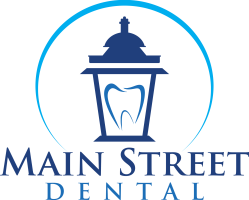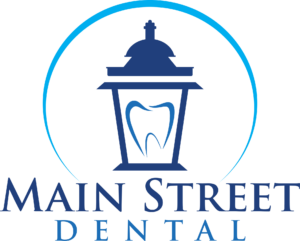Periodontal Therapy
When discussing oral health, people frequently prioritize teeth, but gums are just as important. In addition to providing support and protection for our teeth, they also nourish the roots of our teeth. Since you clean and floss your teeth frequently, you might believe you do not need to worry about gum disease. But even the most effective oral hygiene practices do not always prevent gum disease. Plaque can accumulate in areas that your toothbrush and floss cannot reach. That is why we provide periodontal therapy in North Baltimore, OH.
What is Gingivitis?
Gingivitis is a mild form of gum disease characterized by inflammation of the gums. If gingivitis is left untreated, it can progress to periodontal disease, a more severe condition that can damage the gums, bones, and other tissues that support the teeth. The main difference between gingivitis and gum disease is that gingivitis is reversible with proper oral hygiene, while gum disease is not.
What is Periodontal Disease?
Periodontal disease is classified into two main types: gingival disease and periodontitis. Gingival disease refers to any condition that affects the gums, while periodontitis refers to inflammation of the periodontium, which is the tissue that surrounds and supports the teeth. Both gingival disease and periodontitis can lead to loss of bone and tooth loss if left untreated.
What are the Symptoms of Gum Disease?
Gingivitis is a simple inflammation that marks the beginning of gum disease. If your gums are excessively red or bleed when you brush and floss your teeth, you may have inflamed gums. Additionally, you can have poor breath or sensitive gums.
The gums begin to peel away from the teeth in the early stages of periodontal disease, and tiny gaps appear. Your oral health suffers significantly from these gaps. At Main Street Dental, we hate to see pockets in the gum tissue surrounding the teeth. They can support bacteria that reside there and multiply, making an infection worse.
Jawbone deterioration is a sign of moderate periodontitis. The loosening of your teeth becomes noticeable. If the condition worsens to severe periodontitis, your teeth will probably eventually fall out.
Periodontal Therapy Options
The various forms of therapy used to treat periodontal (gum) disease are collectively referred to as periodontal therapy. Although periodontal therapy sounds like a complex procedure, it just addresses unhealthy or diseased gum tissue.
Dr. Michael O’Neill and Dr. Emily Spetka will recommend a treatment strategy based on the severity of your gum disease. Some of our treatment options include:
Professional Dental Cleanings: More frequent dental cleanings and antibacterial rinses at home may be sufficient for patients with mild or early-stage gum disease to restore oral health.
Scaling & Root Planing “Deep Cleaning”: A deep cleaning is a dental procedure we use to remove plaque and tartar from the teeth and gums. During a deep cleaning, your dental hygienist will use scaling and root planing to remove plaque and tartar from the teeth and gums. Scaling involves using a unique tool to remove tartar from the surface of the teeth. Root planing consists in using a special tool to clean the roots of the teeth, which can be affected by gingivitis.
Specialist Gum Surgery: We may recommend pocket reduction surgery for more advanced stages. We can avoid damage brought on by periodontal disease’s advancement and aid you in maintaining a healthy smile by minimizing pocket depth and getting rid of any already present germs. We can combine these operations with regenerative ones to encourage the growth of new bone tissue.
Periodontal Therapy in North Baltimore, OH
The best course of action is always to prevent periodontal disease. When it isn’t possible, getting gum disease treatment and sticking to your home care regimen may help you avoid unnecessary tooth loss.
If you have swollen or puffy gums, redness, or bleeding, please make an appointment with Main Street Dental for periodontal therapy in North Baltimore, OH, today.

